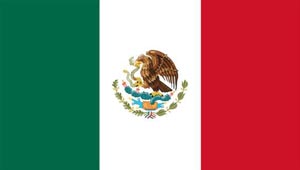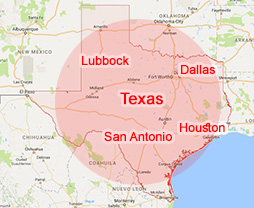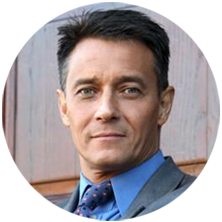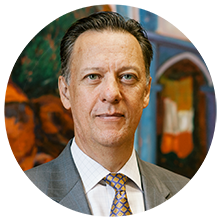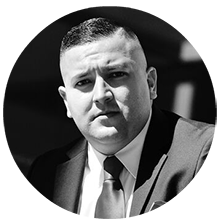Gideon v. Wainwright Right to Counsel Part 5
I’ve represented murderers, rapists, prostitutes, heroin addicts, armed robbers, burglars, and others who have broken the law. But as a lawyer I believe it’s my job to take either side of the case even if I would, even if I would prefer the other side, and to do the best I can with the law and the facts that are given to me in that case.
The arguments in Gideon were set for January of 1963. We were given an hour and half. I asked George Mantts, the assistant attorney general of Alabama who had written the security on I brief on our behalf to take a half hour and I took an hour. We arrived in Washington DC on a Sunday. The next morning Ann, George Mantts and I went to the Supreme Court. That was the first time I had been in the Supreme Court. I can still recall my first impressions. Before the justices entered the room I noticed that each justice had a different sized, different styled chair. Justice Wiser White the former college and professional football player had an enormous chair while Justice Black had a tiny chair that seemed only half the size of justice White’s chair. It was so small it could hardly be seen from the audience.
In October last year my wife Ann and I spent the weekend in Washington DC with 3 of our grandchildren, seeing the sites. One our business was to the Supreme Court and I noticed now that all the justices have the same chair. Same size, same style chair. I’m not sure what that, what that signifies, but it was, they all have the same chair now. On that first day the justices filed in and began by swearing in new members. George Mantts moved my admission and chief justice, justice Earl Warren leaned over the bench and welcomed me, he said,” welcome Mr. Jacob to the bar of the supreme court of the United States. At that time I was 27 years old, and I had been a member of the floor bar for just barely 3 years which was, what was needed to be admitted to the Supreme Court at the time. The rest of that day we leaded, we listened to the reading of opinions. What are my impress, what are my impressions was the informality of the court. I expected lot of ceremony, lot of formality but the atmosphere was quite informal. Justices would scribble notes and someone who had appeared from the curtain behind the bench and take the note then return a few minutes later with, with a book or books from Supreme Court’s library.
As the opinion was being read, one of the other justices would get up, would walk out and then return in a few minutes. One justice would get involved in whispered conversation with justice seated next to him as the 3rd justice was reading an opinion. Justice White whirled around in his chair and faced the curtain behind him for about 10 minutes before returning to the front.
For a while Justice William Douglas wrote furiously, then licked a number of envelopes…shut and then pounded them on the bench. I later learned from Anthony Louis who wrote the book “Gideon’s trumpet” that Justice Douglas wrote letters to his friends during court sessions.
All of this changed the next day, when oral arguments began. The court became very business-like. There was one case before ours. The White Motor company case versus United States, the government’s lawyer was Archibal Cocks who was the solicitor general of the United States. He later became special con, one of the special prosecutors in the Water Gate case. There are backup or ready tables behind the tables of the lawyers arguing the case. I was seated at the backup table on the left as we faced the bench and I was behind Gearhard Gazel; the lawyer for the White motor company. He later became a federal judge. Both he and Cocks were wearing morning coats and Kales. I was running a dark blue suit because I had phoned the clerk’s office and they had told me that dark suit would be, would be appropriate.
Gazel had a great sense of humor. He kept leaning back, on his chair toward me, and making humorous comments during the arguments. At one point he said, “Watch me! I’m going have to make a jury argument” that’s what lawyers say when law is not on their side and they have to make an impassionate, emotional argument in order to win. Whereas surprising is that despite that comment, he won the case. No one was seated at the very table to my right. But as the White case ended Abe Fortas appeared. He must have made arrangements with the clerk to phone him just before it was time for beginning of our argument and Gideon versus Cockerens case. He was wearing a brown suit. He was a middle height dapper looking and he had a slowed deep deliberate voice. Soon after it began talking, the noon hour arrived and the court recessed for lunch. Fortas and I were lead down the stairs one floor below the courtroom for lunch. We introduced ourselves and we settled that we had wrote letters corresponding but we hadn’t met before. We introduced ourselves; we sat at a small table in the middle of the room facing each other.
We were the only people in the room other than the waiter who wasn’t there all of the, the time. He was there only part of the time. Fortas began by apologizing. He and his wife had sent an invitation to my wife and me to come to their home for dinner, on the previous Sunday evening with, together with lawyers and the companion’s cases, companion cases to the Gideon. Douglas versus California, draper versus Washington and Lain versus Brown. The invitation had going to Tallahassee because now I was now in Barto couple hundred miles South of Tallahassee. We had not received the invitation. When we returned from lunch Abe Fortas resumed his argument. By this time the, the spectator section of the Supreme Court was empty except for one person, my wife Ann. It seemed strange that for a case of this importance there was only one person in the audience. In the movie Gideon’s trumpet, the court room is packed, but that wasn’t true. One other non-lawyer was present in the court room and that was Anthony Louis who, who was the reporter at that time for the New York Times. Of course he later wrote the book “Gideon’s trumpet” he was allowed to sit with his portable typewrite inside the bar with members of the Supreme Court bar.

